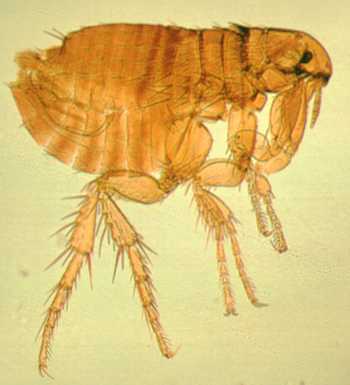Arachnids
 |
Ctenocephalides canis. Male flea,
lateral view (unstained, scanning power). Fleas are often discovered feeding
on the legs of people; they rarely pose a problem in being identified, but they
may be brought to the laboratory for identification when people are concerned
about disease transmission in the local environment (eg, plague). Fleas are
laterally compressed and attain sizes up to 10 mm long. There are no sharp demarcations
among the head, thorax, and abdomen. The body and three pairs of legs have many
stiff setae, giving the flea a bristled appearance microscopically. Male fleas,
as seen here, typically have the terminal portion of the abdomen oriented upward.
due to the presence of copulatory structures (aedaegus and claspers); in females,
the abdomen is rounded at the posterior end and there are no external genitalia.
Dog and cat fleas have toothlike spines (genal comb) on the lower border of
the head and similar spines (pronotal comb) at the posterior border of the prothorax.

